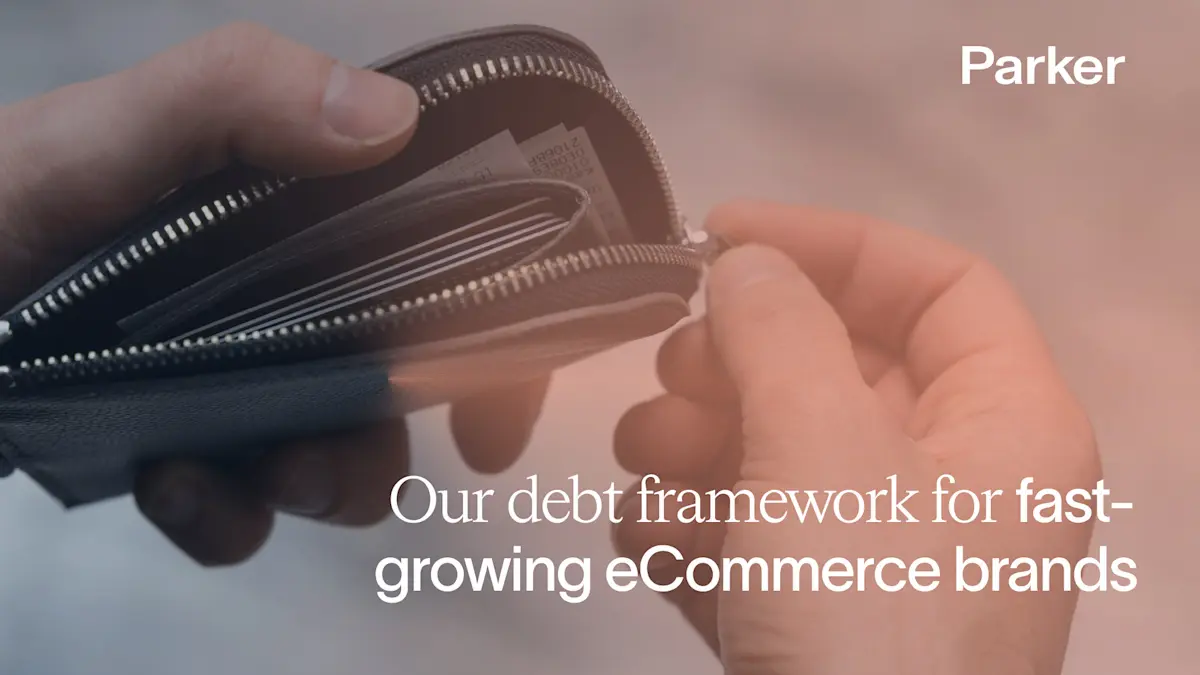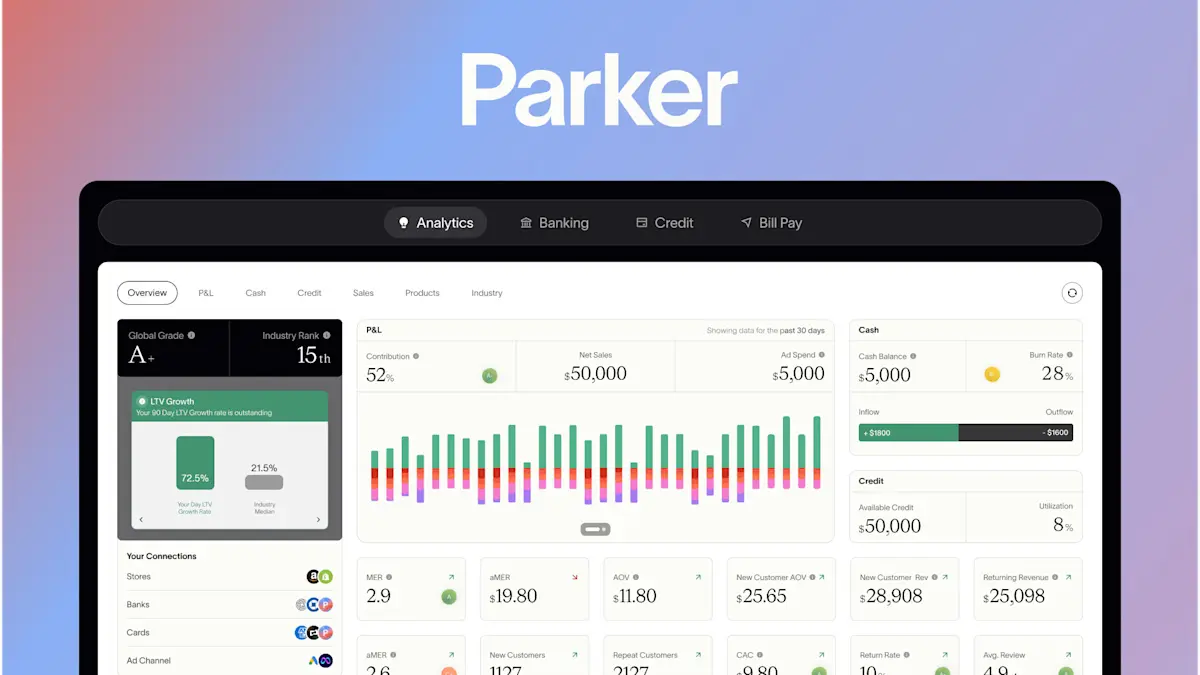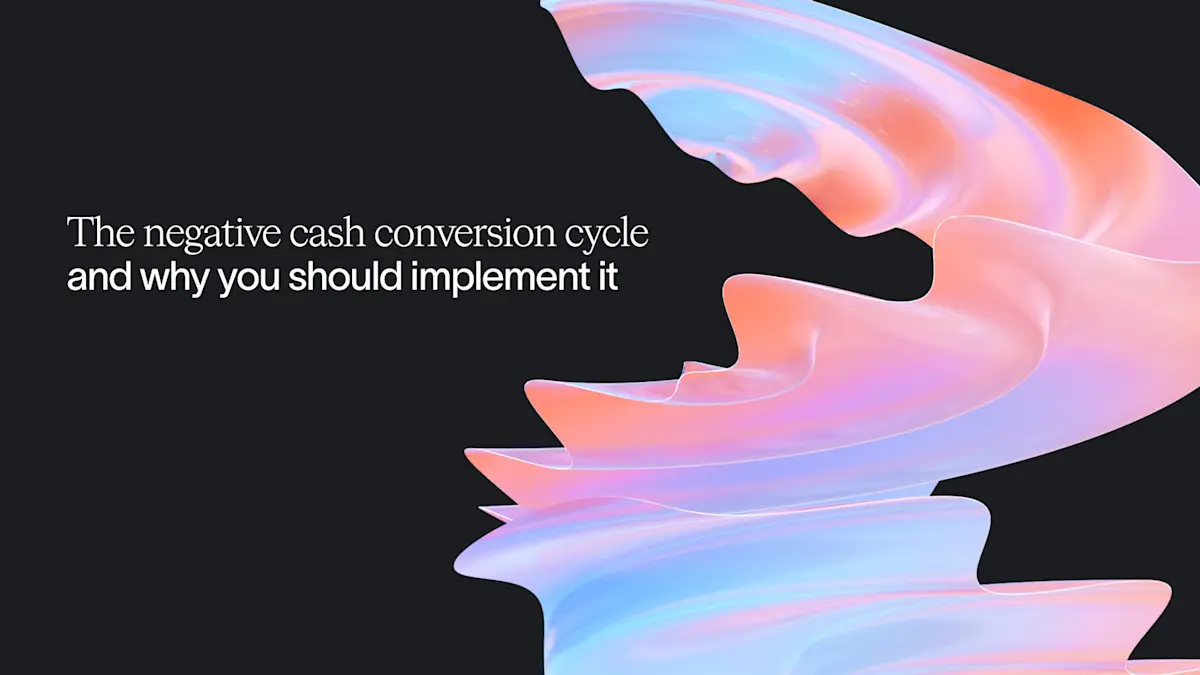Our Debt Framework for Fast-Growing Ecommerce Brands

If you read our essay on the perfect ecommerce P&L, you learned that our success as a business relies entirely on approving the right kinds of ecommerce companies. It's our job to spot the signals of a healthy business with strong potential. And one of the most important indicators we look at is a company's debt profile.
In this companion essay, we share the type of debt characteristics we look for at Parker when evaluating ecom brands, along with a simple framework founders can use to decide which types of debt to leverage for growth (and why). The goal is to help you make smart debt decisions to scale your business sustainably.
First, let’s explore the role debt plays in ecommerce growth.
The role of debt in ecommerce growth
For fast-growing ecommerce brands, debt is a powerful tool to:
- Invest in growth
- Smooth out cash flow cycles
- Fund key drivers like inventory and marketing
Credit gives you the flexibility to invest in the two biggest levers that move the needle for your business:
- Inventory: Purchasing inventory often requires large cash payments upfront, long before you see any revenue. Debt allows you to match inventory investment to the cash conversion cycle.
- Advertising: Ecommerce brands need significant budgets to pay for ads and acquire new customers. Credit cards let you float ad spend and align repayments with the sales generated from that spend.
Debt also gives brands breathing room to smooth out common cash flow gaps.
Seasonal sales cycles, extended supplier payment terms, and the timing of ad budgets can all create working capital crunches. Lines of credit help manage the timing differences between cash inflows and outflows.
The 4 main debt options for ecommerce
There are lots of ways to take on business debt. Parker’s risk team has narrowed it down to four main options, ordered from most to least desirable:
- Business credit cards: Credit cards are the most common and desirable starting point for brands looking to quickly fund ad spend or inventory. Look for favorable terms like 30-60 day interest-free periods and look out for costly cash-advance fees. Rolling balances monthly can incur high interest.
- Specialized ecommerce financing: companies like Parker offer financing designed specifically for ecommerce cash flows. We give brands generous credit limits and long interest-free periods (up to 90 days³) to align repayment to sales cycles. It's a way to access significant growth capital tailored to your business model.
- Traditional bank lines of credit: Once you reach scale, traditional lines of credit become an option. They typically require $5M+ in revenue, 2+ years in business, and hard assets to borrow against. Bank lines offer attractively low rates but less flexibility than cards.
- Merchant cash advances (MCAs): MCAs provide fast funding but should only be used as a last resort. You receive a lump sum upfront in exchange for a substantial cut of future sales. While MCAs can plug urgent short-term gaps, they are extremely expensive. Frequent use quickly eats into your margins.
Important note: You should avoid the temptation to stack multiple sources of the same type of debt. While it's fine to have a mix of different debt types (such as a business credit card, a specialized ecommerce financing product, and a bank line of credit), using multiple forms of a single debt type (e.g., several MCAs or multiple credit cards) can be dangerous. Drawing on one line of credit to pay down another of the same type is a slippery slope and a major red flag that significantly elevates risk.
Aligning debt to cash conversion cycles
At Parker, we encourage customers to match the type of debt they use to the cash conversion cycles and payback terms associated with what they're funding.
Inventory purchases often have extended cash cycles, especially for brands that manufacture overseas. If it takes 3 months from the time you order products to when you receive revenue from selling them, use debt that aligns with that timeline. Putting 3-month inventory buys on a 30-day card can create a dangerous timing mismatch — it can force you to pay back the debt long before your inventory can generate revenue.
On the flip side, ad spend typically has much shorter cash cycles. An ad campaign that's performing well should yield incremental sales within days. For this reason, credit cards or financing with shorter 30-60 day terms are better suited to funding digital marketing spend. The key is to align ad spend payback to the revenue that spend actually generates.
Debt is leverage — apply it strategically
When used strategically, debt acts as a lever to unlock growth, smooth finances and reach profitability faster. But if applied carelessly, it can also drag down your business with unsustainable liability.
At Parker, our mission is to build and provide ecommerce founders with the most effective tools and insights to scale sustainably. Used responsibly, credit amplifies the momentum you're building — but it isn't a magic bullet. Debt is an accelerant, not a substitute for strong unit economics and business fundamentals. No amount of financing can save an inherently flawed business model.
The key is to first focus on establishing product-market fit, healthy margins and a clear path to profitability. Get your house in order. Then, layer on debt purposefully as leverage to accelerate growth. With strong underlying economics, disciplined credit usage and the tenacity to execute, you'll have the fuel you need to scale your ecommerce brand to the next level.
Related Articles
Ready to Join the Financial Revolution?





